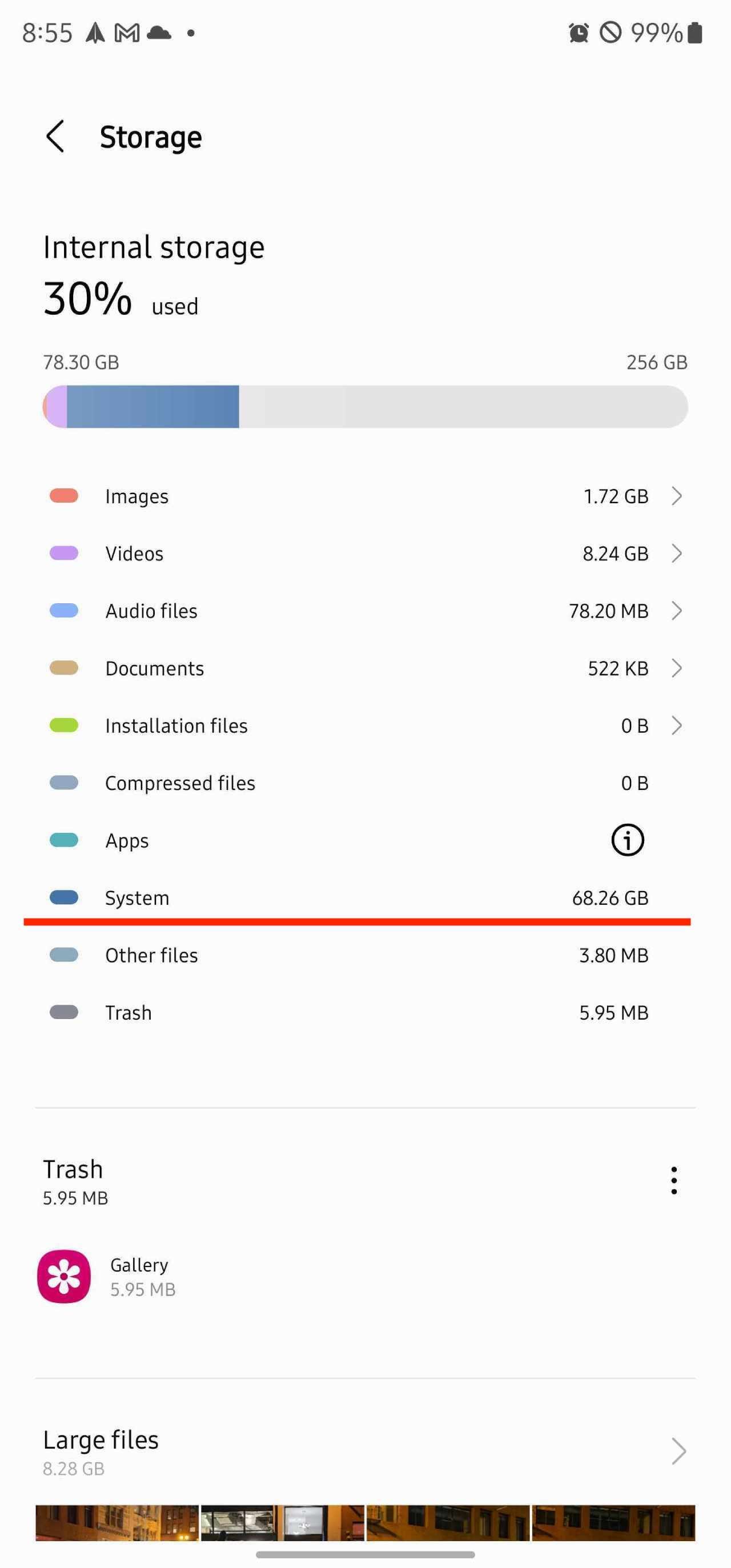Samsung Galaxy S23 bloatware takes up 60GB of storage out of the box
That's four times more storage space than the Google Pixel 7 requires from stock
The Samsung Galaxy S23 requires a whopping 60GB of storage space for its version of Android, One UI 5.1, according to several reports. That’s four times more space than the Google Pixel 7 requires for its stock version of Android, which only takes up 15GB of storage out of the box.
Android Authority confirmed that Samsung’s operating system seemingly takes up so much room because of bloatware. The phone comes with a number of Google apps but Samsung clones them to fit its ecosystem, meaning you end up with two apps that do the same thing: two Internet browsers or note-taking apps, for example.
The situation’s even worse on the Samsung Galaxy S23 Ultra. We can confirm that 68.26GB of storage is reserved for system files, which is a sizable chunk of the phone’s promised capacity.
Samsung also sells space on its devices for third-party apps to be pre-installed, such as Facebook. Sometimes, these apps can’t be uninstalled, which means any storage space they require is off-limits for good.
➡️ The Shortcut Skinny: Samsung S23 bloatware
😳 Samsung Galaxy S23 devices may come with less storage than you thought
😣 Up to 60GB of the phone’s storage is reserved for system files
✋ That means if you opt for the 128GB capacity model, you’ll lose up to 50% of usable space
🚫 The Samsung Galaxy S23 doesn’t have a microSD card
It isn’t unusual for devices to reserve a chunk of storage for system files. The PS5 comes with an 825GB SSD, however users can only access 667GB, which means 19% of the SSD is off-limits. The same is true for PS5 Disc vs Digital model.
If you stump up the cash for the 128GB Samsung Galaxy S23, then, you’ll only get 68GB of free space to play with, as nearly half of it will be reserved for the system partition. Once you’ve downloaded a couple of apps and taken a few photos and videos, that free space will undoubtedly fill up fast.
To make matters worse, the Samsung Galaxy S23 doesn’t have a microSD card slot. That means you’re at the mercy of paying more for higher-capacity storage models, which are in turn more expensive.
Of course, there is always cloud storage to fall back on if you do find yourself having to delete content more regularly than you’d like. But again, you can expect to pay a premium for higher tiers of cloud storage.
If you’re interested in Samsung’s new flagship phone, read our Samsung Galaxy S23 Ultra hands-on review. We’re also putting the phone’s camera through its paces in our Samsung Galaxy S23 Ultra camera review, where you can find loads of comparison shots.





Ah, no wonder my S9 and S21 were such unhappy devices. The latter, especially, getting stuck in a reboot loop spelled the end of my time with Samsung. Much prefer the Pixel-verse, now.